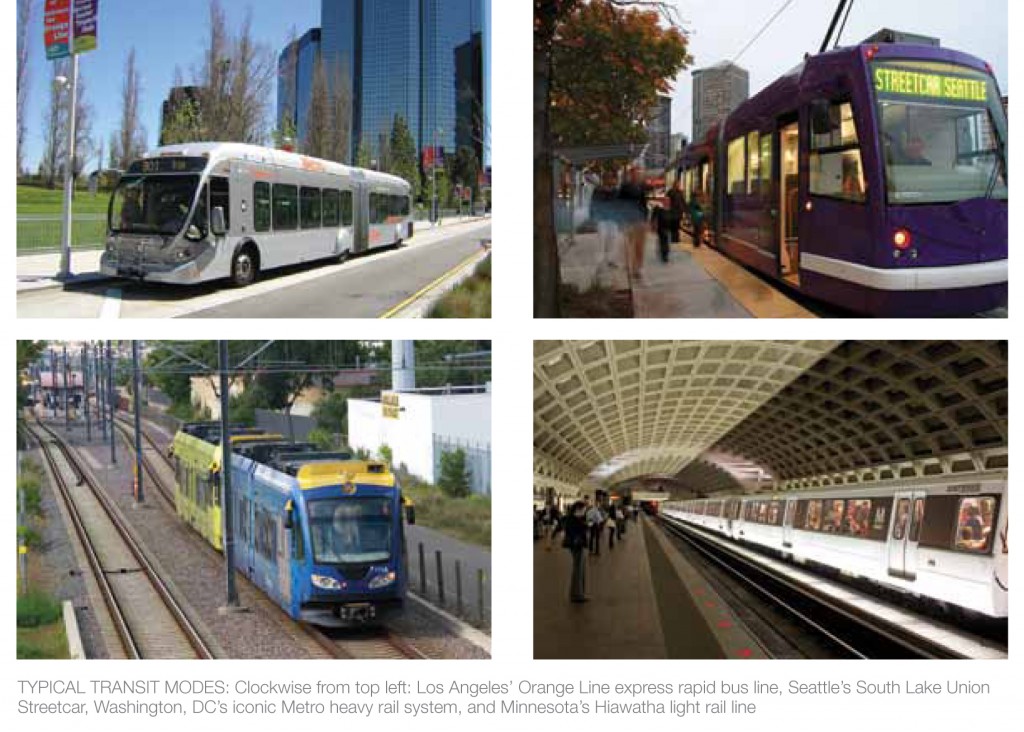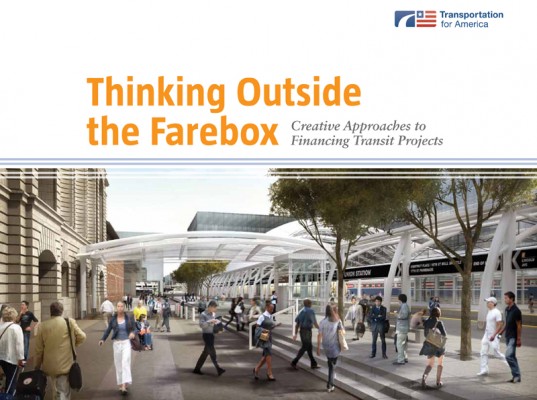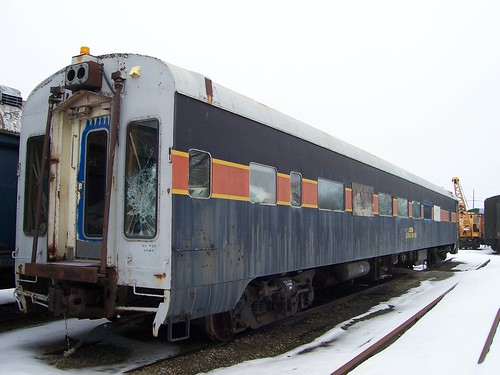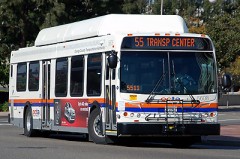This new free guidebook from Transportation for America is designed to help community leaders across the country meet the demand for transit by raising money to build and operate it outside of the traditional federal funding sources.
The demand for public transportation service is at its highest point in 50 years.The causes are many: rising gas prices, an increasingly urbanized population, growing numbers of seniors, and the preferences of the “millennial” generation. These factors and more are contributing to soaring ridership on existing transit routes. And more communities today are looking for funds to build and operate rail and bus lines than ever before.
Yet a combination of ideological gridlock in Congress, dwindling federal gas tax revenues, and the elimination of earmarks have made the traditional approaches to building transit much more challenging. But despite these obstacles, many communities are finding creative ways to move ahead. From Tucson to Charlotte, communities across the country are rounding up funding from sources outside of the traditional federal funding sources to build tomorrow’s transportation system today.

Growing public interest in transit is leading many communities to look for ways to create or expand their transit systems, but as more communities apply for money from a shrinking piece of the pie, the already over-subscribed traditional federal programs for transit won’t be able to fund every project seeking assistance. To make the money go further, the New Starts transit program, the main source of funding for new transit systems, has recently covered one-half of project costs, down from 80 percent in the past, with some projects getting as little as one-third of their required total.
Even with this policy in effect the waiting list grows longer every year.
But all is not lost. There are ways to pay for new transit investments without waiting so long, and a growing number of communities are pursuing them. But doing so requires more sophistication in the art of project finance than has been needed in the past.
Someday—soon, we hope—the federal government may respond to the high level of demand for new transit investments by increasing funding available to communities. Those of us who aspire to provide these options for people in our communities must continue to work toward that goal. In the meantime, though, we can demonstrate the depth of the need and the strength of our desire by finding our own creative ways to make these projects happen.
This new guidebook is a first step toward that goal. We’ll be posting excerpts and stories here in the coming days, but you can download the full book today.

Top Left: Photo courtesy of the Metro Library and Archives, top right: Flickr photo by the Seattle DOT, bottom right: Flickr photo by Andrew Bossi, bottom left: Flickr photo by Steven Vance






 A recent California Supreme Court decision could restore billions in funding for public transportation in the nation’s most populous state.
A recent California Supreme Court decision could restore billions in funding for public transportation in the nation’s most populous state.